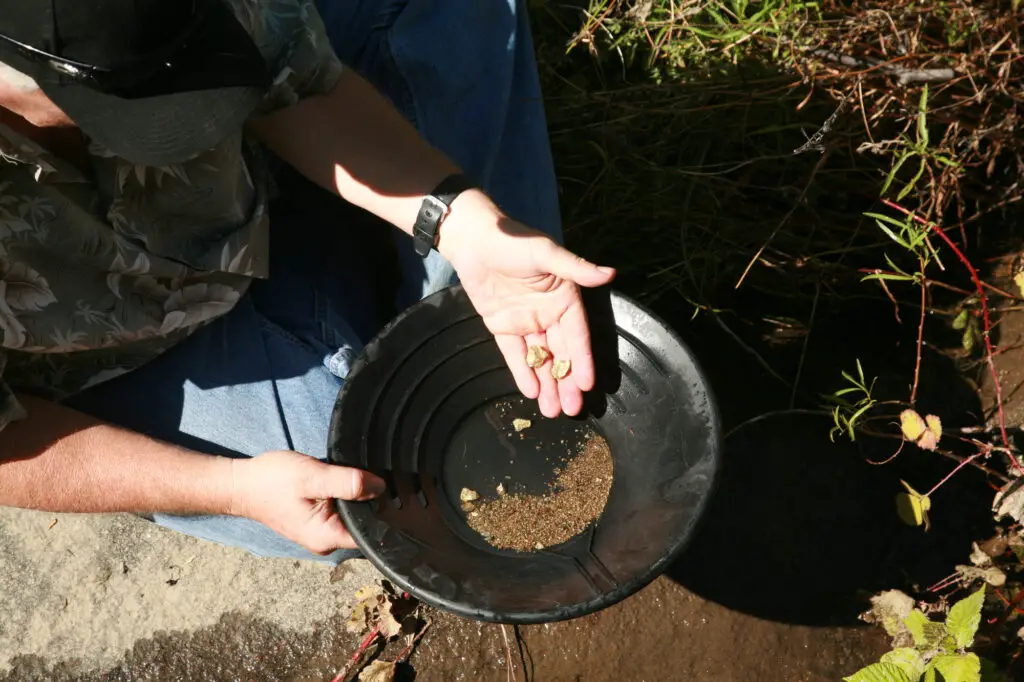There’s a certain allure in the quest for gold that has captivated humans for thousands of years. The glimmer of possibility, the thrill of the find, the palpable link to a storied past — it’s an adventure that continues to draw many, and the state of Victoria in Australia is a gold prospector’s paradise. Known for its rich history from the gold rush era in the mid-1800s, Victoria is brimming with creeks and rivers where enthusiasts can still find precious gold nuggets or flakes.
Our journey in this blog post will take us through winding waterways, serene landscapes, and hidden spots where you can try your luck and live the prospector’s dream. From the renowned Bendigo and Ballarat regions to the lesser-known but equally promising areas, we’ll uncover the best creeks to find gold in Victoria.
However, before we delve into the specifics, it’s vital to understand and respect the local laws associated with gold prospecting. The rules vary depending on the type of land, the equipment used, and the amount of gold you’re permitted to keep. We’ll also guide you through this complex, yet crucial aspect, ensuring your gold panning endeavor is not only successful but also lawful and respectful of the environment.
So, whether you’re a seasoned prospector, a hobbyist, or someone looking to embark on a unique adventure, this blog is your comprehensive guide to gold panning in Victoria. Dust off your gold pans, pack your sense of adventure, and join us as we traverse Victoria’s golden creeks. Let the modern-day gold rush begin!

What Creeks And Rivers Are Best For Gold Panning In:
Ballarat
Ballarat, a city steeped in the history of the Victorian Gold Rush, is a haven for prospectors. Its creeks and rivers are teeming with alluvial gold, remnants of a time when fortunes were made overnight, and the dreams of riches lured thousands to this part of the world. Here are some of the top spots in and around Ballarat for gold panning:
Yarrowee River: Flowing through the heart of Ballarat, the Yarrowee River has a rich gold history. Prospectors have found both nuggets and gold dust here, primarily in the alluvial deposits around the riverbed.
Leigh River: Located towards the south of Ballarat, the Leigh River is another popular spot. It’s particularly known for its plentiful alluvial gold deposits.
Moorabool River: This river, found to the east of Ballarat, has been a favorite among prospectors. The gold found here is typically very fine, requiring careful panning.
Buninyong Creek: Situated in the township of Buninyong, just south of Ballarat, this creek had significant gold findings during the gold rush era. Nuggets and flakes can still be found in this area.
Bendigo
Historically, Bendigo was the epicentre of one of the world’s largest gold rushes. Today, the legacy of the Gold Rush era lives on, with many rivers and creeks around Bendigo still offering ample opportunities for gold prospecting. Here are some of the top spots:
Bendigo Creek: As the namesake creek of the city, Bendigo Creek holds a storied past full of gold discoveries. It was here that the first major gold findings of the region were made, and prospectors can still find gold in the alluvial deposits around the creek bed.
Kangaroo Creek: Located in Kangaroo Flat, a suburb of Bendigo, this creek has seen significant gold discoveries in the past. It’s worth exploring for gold nuggets and dust.
Sheepwash Creek: This creek, located in the Myer’s Flat area, was a prolific spot during the Gold Rush. Gold panning here can still yield some flakes and nuggets.
Emu Creek: Near the town of Marong west of Bendigo, Emu Creek is another popular spot among gold prospectors. Its catchment was a rich source of alluvial gold during the Gold Rush.
Huntly and Bagshot Area: North of Bendigo, the Huntly and Bagshot region has many creeks and gullies that were prolific gold producers in the 19th century. These areas remain popular for gold detecting today.
Gippsland:
Gippsland, in the eastern region of Victoria, has a rich history of gold prospecting dating back to the 19th century. Even now, many of its creeks and rivers offer the chance to pan for gold, making it an attractive destination for prospectors. Here are some of the top spots for gold panning in Gippsland:
Jordan River: Located in the Walhalla area, the Jordan River is renowned for its gold prospecting potential. During the gold rush, Walhalla was one of the richest towns in Victoria, and the Jordan River was a key gold source.
Stringers Creek: Also in the Walhalla region, Stringers Creek was the site of significant gold discoveries in the 19th century. Today, you can still find gold nuggets and dust in the alluvial deposits around the creek.
Mitchell River: Near the town of Bairnsdale, the Mitchell River has historically been a prolific gold-producing area. Prospectors have found success in the river’s alluvial deposits.
Dargo River: The Dargo High Plains are known for their gold-bearing creeks, with the Dargo River being a standout. This river has been a favorite among gold prospectors for decades.
Tanja Creek: Located in the Bega Valley, Tanja Creek had significant gold findings during the gold rush era. It remains a worthwhile spot to try your luck panning for gold.
Thomson River: Near the town of Sale, the Thomson River is another well-known spot for prospectors. Gold can still be found in the river’s alluvial deposits.
Castlemaine
The town of Castlemaine, nestled in the Goldfields region of Victoria, is a spot rich in gold mining history. The area was a major site during the Victorian Gold Rush in the 1850s and, to this day, prospectors continue to find gold in its rivers and creeks. Here are some of the best spots in and around Castlemaine for gold panning:
Forest Creek: This creek is where the Mount Alexander Gold Rush started. It was known for its abundant alluvial gold during the Gold Rush era and continues to be a popular spot for prospectors today.
Campbells Creek: A tributary of the Loddon River, Campbells Creek has been a prolific site for gold discoveries. Its alluvial deposits continue to yield gold nuggets and flakes.
Expedition Pass Reservoir: While not a creek or river, this reservoir is worth mentioning because of the gold-bearing creeks that feed into it. The surrounding area has been a popular spot for prospectors over the years.
Barkers Creek: Flowing through the Castlemaine region, Barkers Creek has been a favourite among gold prospectors. Alluvial gold can be found in its waters.
Fryers Creek: This creek is located to the south of Castlemaine and was a notable gold-producing area during the 1850s. Prospectors continue to find gold in this creek.
St Arnaud
Located in the heart of the Victorian Goldfields, St Arnaud was once a bustling gold mining town during the 19th-century Gold Rush. Today, prospectors can still find traces of gold in the waterways surrounding this historic town. Here are some of the top spots for gold panning near St Arnaud:
Avoca River: Flowing through the town, the Avoca River has been a popular spot for gold panning. During the gold rush era, this river yielded significant amounts of alluvial gold, and prospectors can still find gold in its waters.
Stuart Mill Creek: Located south of St Arnaud, Stuart Mill Creek has a rich history of gold discoveries. Today, it remains a viable spot for gold prospectors.
Barkly River: North of St Arnaud, Barkly River is another location where gold has been found historically. Its alluvial deposits continue to yield gold nuggets and flakes.
Carapooee Creek: This creek, located to the west of St Arnaud, has seen considerable gold discoveries in the past. Prospectors can still find gold in its alluvial deposits.
What Are The local Laws In Victoria On Gold Panning?
Gold prospecting and fossicking in Victoria are regulated activities, and there are several rules and regulations that individuals must adhere to.
Miner’s Right: To legally prospect for gold in Victoria, you must have a Miner’s Right. This is a permit that you can purchase online from the Earth Resources section of the Victorian Government’s Department of Jobs, Precincts and Regions. As of my last update, the cost was $26.00 for a 10-year licence.
Equipment: Restrictions exist on the type of equipment you can use. Tools must be manual and include items like gold pans, shovels, sieves, and metal detectors. Motorised equipment, such as dredges or sluices, are generally not allowed without a special licence.
Environmental Considerations: Prospecting must be done in a way that minimises environmental harm. This means refilling any holes you dig, not removing vegetation, and not disturbing waterways or animal habitats.
Quantity: With a Miner’s Right, you are allowed to keep all the gold you find. However, if you want to sell the gold, you will need to observe the relevant laws and taxes related to income and capital gains.
Respect: You should always respect other prospectors and maintain a reasonable distance from them. Also, always respect the land and its history, especially if it’s an area of significance to Aboriginal communities.

